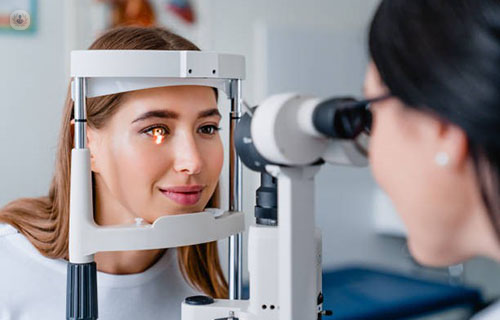An introduction to glaucoma
Written in association with:In his latest online article, Mr Manoj Mathai Anicatt gives us his insights into glaucoma. He explains what it is, what the different types are, the risk factors and what can happen if left undiagnosed.
What is glaucoma?

Glaucoma is an eye disease where the pressure within the eyeball goes high because the normal outflow channels that drain fluid from the eye become narrow and hardened. Glaucoma is more likely after the age of 40 years especially in those with a positive family history of this condition. The incidence of this condition increases with age and is therefore more common in the older population.
What are the types of glaucoma?
Glaucoma is a condition that affects the eyes and can lead to vision loss. It has two main types – open angle and closed angle. The type of glaucoma that is more common is open angle glaucoma, which does not cause any symptoms or warning signs. This means that people with this type of glaucoma may not notice any changes in their vision until it is too late.
Closed angle glaucoma, is less common. Closed angle glaucoma is associated with severe pain and redness of the eyes. This type of glaucoma occurs when the drainage angle of the eye becomes blocked, causing a sudden increase in eye pressure. This type of glaucoma is serious and requires immediate medical attention.
What are the risk factors of glaucoma?
The risk factors of glaucoma can include:
- Age: Glaucoma is more common in people over 40 years old, and the risk increases with age.
- Family history: Having relatives with glaucoma increases the chance of developing the disease.
- Myopia: People with near sightedness are more likely to have glaucoma.
- Thin cornea: The cornea is the clear window of the eye, and having a thin one can affect the eye pressure.
- Ethnicity: People of African or Afro-Caribbean descent have a higher risk of glaucoma.
- Medical conditions: Some diseases, such as diabetes, high blood pressure, migraines, or sleep apnea, can be associated with glaucoma.
- Eye injury or infection: Trauma or inflammation of the eye can damage the drainage system or the optic nerve.
- Medications: Some drugs, such as steroids, can increase the eye pressure.
What can a delayed diagnosis mean for the patient?
Delayed diagnosis of glaucoma is dangerous because it results in permanent severe loss of vision and field of vision. This irreversible loss of vision can lead to disqualification from driving by the DVLA. This highlights the importance of regular optician checks especially in those over 40 years with a family history of glaucoma.
Mr Manoj Mathai Anicatt is a highly esteemed ophthalmologist with over 25 years of experience in his field. You can schedule an appointment with Mr Anicatt today on his Top Doctor’s profile.



